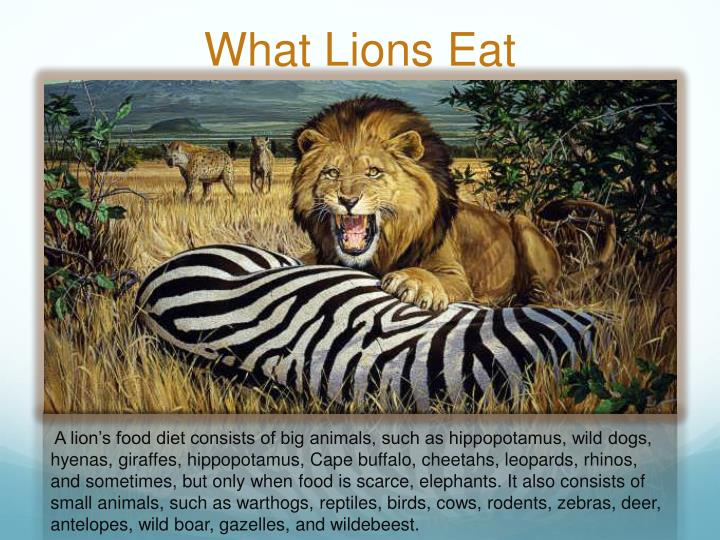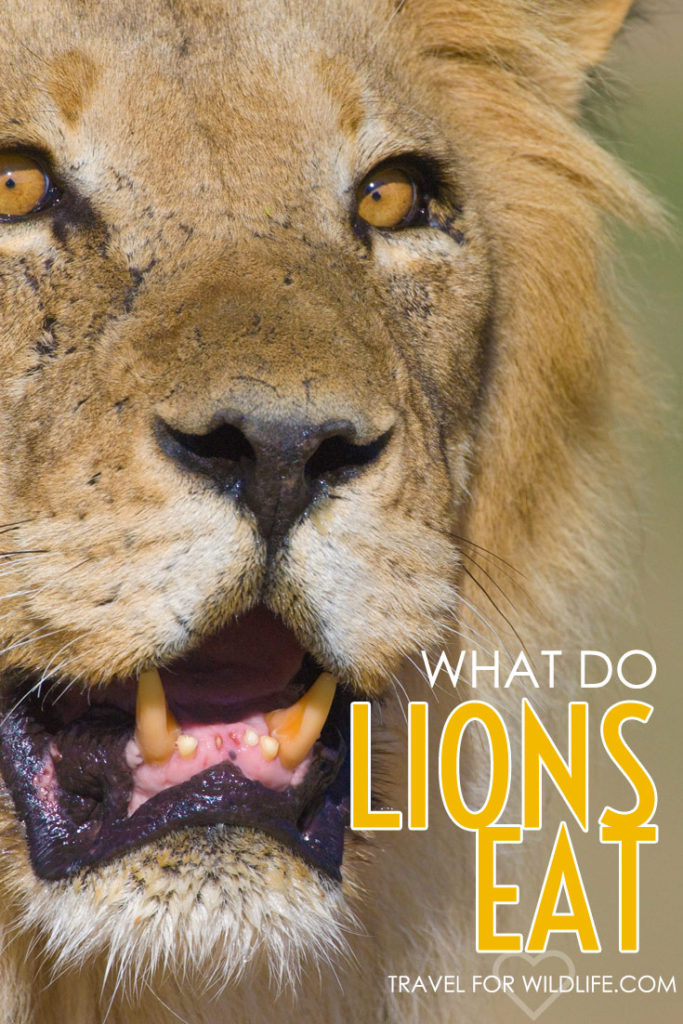The Natural Prey and Feeding Habits of Lions
Lions, being apex predators, maintain a diverse and opportunistic diet primarily consisting of large herbivores. Their typical meals often include species like zebras, wildebeests, and buffalos, which are abundant in their African and Asian habitats. These social felines employ various hunting techniques, either individually or cooperatively, depending on the situation. Ambushes, stalking, and high-speed pursuits are common strategies used to secure a meal. The social dynamics of lions during feeding are also intriguing, with dominant individuals often monopolizing food resources, while subordinates wait for their turn.
How a Lion’s Diet Varies Across Different Habitats
Lions inhabit various geographical regions, from the expansive African savannas to dense forests and arid deserts. Consequently, their diets adapt to the unique environmental conditions and prey availability in these habitats. In savannas, lions primarily prey on large herbivores like zebras, wildebeests, and buffalos. These areas offer ample opportunities for cooperative hunting, enabling lions to bring down large and agile prey. Forest-dwelling lions, however, rely on smaller ungulates, such as duikers and bushbucks, due to the dense vegetation that restricts their mobility and visibility. In arid deserts, lions primarily scavenge on carcasses left by other predators, as large herbivores are scarce. These adaptations illustrate the remarkable flexibility of a lion’s diet, ensuring their survival in diverse habitats.
The Role of Scavenging in a Lion’s Diet
While lions are primarily known as skilled hunters, scavenging plays a significant role in their diet, particularly for younger and older individuals. Scavenging allows these lions to access food resources without expending the energy required for hunting. Lions employ various scavenging strategies, such as monitoring the movements of vultures and hyenas, which often lead them to carcasses. They may also steal kills from other predators, using their size and strength to intimidate rivals. Scavenging not only benefits individual lions but also contributes to the overall ecosystem by reducing food waste and promoting nutrient cycling. By scavenging, lions help maintain a balance in the ecosystem and ensure that no food resource goes unused.
A Lion’s Diet in Captivity: Artificial Feeding Regimes
In captivity, lions are provided with artificial feeding regimes that differ significantly from their wild diet. Zoos and wildlife sanctuaries typically offer pre-killed and portioned meat to ensure the lions receive adequate nutrition. While this ensures their dietary needs are met, it may not provide the same mental and physical stimulation as hunting in the wild. Artificial feeding regimes can impact the health and well-being of captive lions, as they may become less active and develop behavioral issues due to a lack of hunting opportunities. Ethical considerations also arise, as providing pre-killed meat may not fully replicate the natural hunting experience. Balancing the nutritional needs of captive lions with their natural instincts remains an ongoing challenge for conservationists and zoological institutions.
Nutritional Composition of a Lion’s Prey: A Breakdown
Understanding the nutritional content of a lion’s primary prey is crucial for appreciating the complexities of a lion’s diet. Macronutrients, such as proteins, fats, and carbohydrates, play essential roles in a lion’s overall health and well-being. Proteins, for instance, are vital for muscle development, repair, and maintenance, while fats provide energy and support cell growth and function. Carbohydrates, although not a primary energy source for lions, still contribute to their diet and help maintain their blood sugar levels. A lion’s dietary needs change throughout their life stages, with growing cubs requiring more energy and nutrients to support their rapid growth and development. Nutritional imbalances can lead to various health issues, including decreased immune function, reduced reproductive success, and increased susceptibility to diseases. Thus, understanding the nutritional composition of a lion’s prey is crucial for ensuring the long-term survival and well-being of these magnificent creatures.
How a Lion’s Diet Impacts Its Role in the Ecosystem
Lions play a vital role in maintaining the balance of their ecosystems through their dietary habits. By preying on large herbivores, they control population sizes, preventing overgrazing and overbrowsing, which can lead to habitat degradation and loss. Moreover, lions’ feeding behaviors contribute to nutrient cycling, as they distribute nutrients across the landscape through their scats and urine. This process, in turn, supports plant growth and the overall health of the ecosystem. Changes in lion populations and their dietary habits can have far-rereaching consequences on food web dynamics, potentially leading to a cascade of ecological effects. For instance, a decline in lion populations may result in increased herbivore populations, altering vegetation patterns and reducing biodiversity. Therefore, understanding and preserving the role of a lion’s diet in the ecosystem is crucial for ensuring the long-term sustainability of these complex and interconnected systems.
Conservation Efforts to Protect Prey Species and Maintain a Balanced Lion’s Diet
Several conservation initiatives aim to preserve prey species and maintain a balanced lion’s diet, ensuring the long-term survival of these magnificent creatures and their ecosystems. Habitat protection is crucial for conserving biodiversity and providing sufficient prey for lions. Protected areas, such as national parks and wildlife reserves, offer a safe haven for both predators and prey, minimizing human-induced threats like habitat loss and fragmentation. Anti-poaching measures are equally important, as illegal hunting can decimate prey populations, leaving lions without adequate food sources. Community-based conservation programs also play a significant role in protecting lions and their dietary needs. By engaging local communities in conservation efforts, these programs promote sustainable land use practices, reduce human-lion conflicts, and foster a sense of stewardship for the environment. Supporting these conservation initiatives is essential for preserving the delicate balance of ecosystems and ensuring the continued survival of lions and their prey.
How to Support Lions and Their Dietary Needs in the Wild
Supporting lion conservation and their dietary needs in the wild is crucial for ensuring the long-term survival of these magnificent creatures and the health of their ecosystems. Responsible tourism plays a significant role in promoting the well-being of lions and their prey. By choosing eco-friendly travel options and supporting local conservation initiatives, tourists can help protect critical habitats and support sustainable development. Citizen science also offers opportunities for individuals to contribute to lion research and conservation efforts. By participating in wildlife monitoring programs or reporting sightings, citizens can help researchers track lion populations and better understand their dietary needs. Advocacy is another essential component of supporting lions and their dietary needs. By raising awareness about the importance of a balanced lion’s diet and the threats facing these animals, individuals can help mobilize support for conservation efforts and influence policy decisions. Together, responsible tourism, citizen science, and advocacy can make a significant difference in promoting the well-being of lions and their ecosystems.


:max_bytes(150000):strip_icc()/lion-brotherhood-838172018-5b7b0fd946e0fb002c1b474f.jpg)



